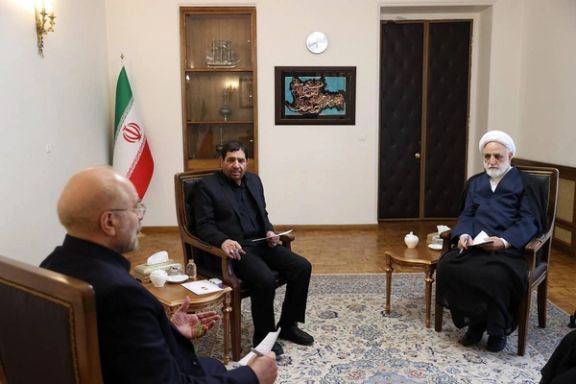Iran Scrambles to Boost Election Turnout Amid Leadership Vacuum

After the sudden death of President Ebrahim Raisi in a helicopter crash, Iran is strategizing ways to increase voter turnout for the impending snap elections amid mass discontent.

After the sudden death of President Ebrahim Raisi in a helicopter crash, Iran is strategizing ways to increase voter turnout for the impending snap elections amid mass discontent.
Tuesday's meeting of the heads of state branches, led by interim President Mohammad Mokhber and other top officials, focused on strategies to galvanize a disillusioned electorate suffering the country’s worst economic crisis since the beginning of the Islamic Republic.
A possibly record low turnout in the March parliamentary elections are believed to have seen as few as eight to ten percent of Iranians vote. Similar lows were seen in the 2021 elections which brought Raisi to power.
During the meeting, also attended by Parliament Speaker Mohammad Bagher Ghalibaf and Judiciary Chief Gholam Hossein Mohseni Ejei, there was a review of recent amendments aimed at decoupling council elections from presidential elections, purportedly to streamline the electoral process.
The upcoming elections are clouded by uncertainty, with no popular candidates on the horizon and skepticism about whether the Guardian Council will allow any non-hardliner contenders to run.
Statements from the meeting stressed the need to continue the system’s policies and maintain a staunch stance against perceived “enemies”, signaling no shift in Iran's political and social controls both at home and on the global stage.
According to the 1979 Constitution, Vice President Mohammad Mokhber has assumed the role of acting president, following approval from Supreme Leader Ali Khamenei, until the snap elections scheduled for June 28.
The Guardian Council spokesman, Hadi Tahan Nazif, confirmed that the newly elected president will serve a four-year term.